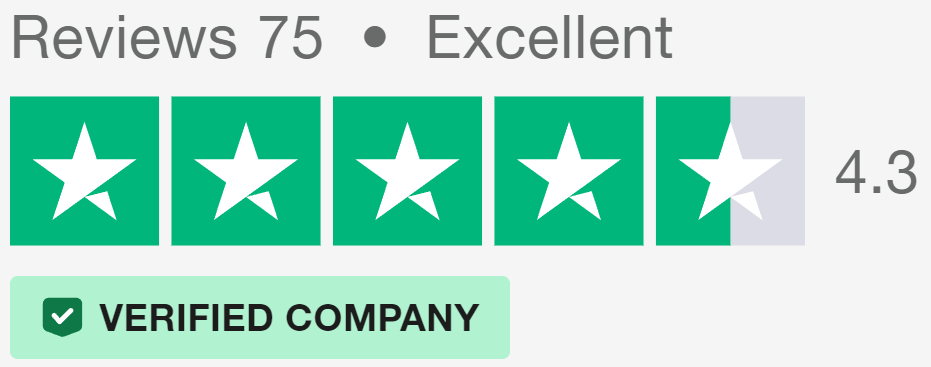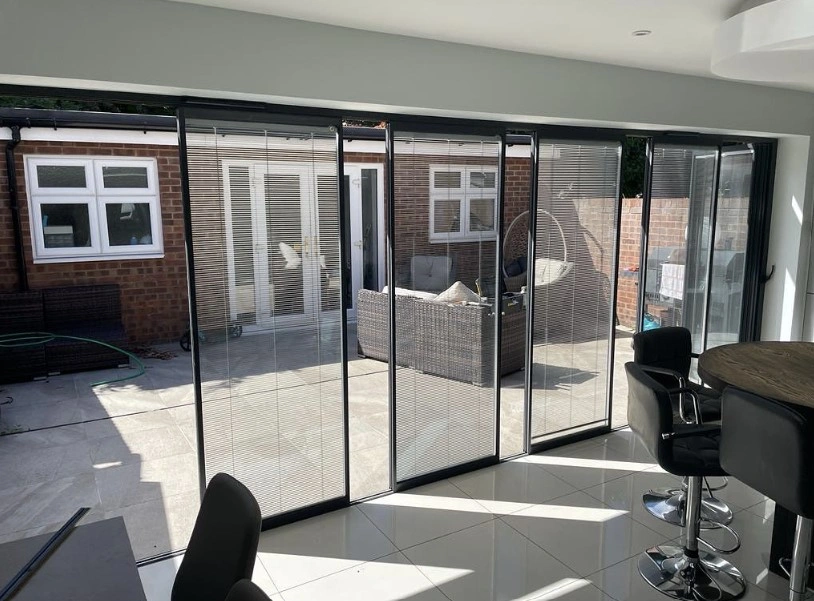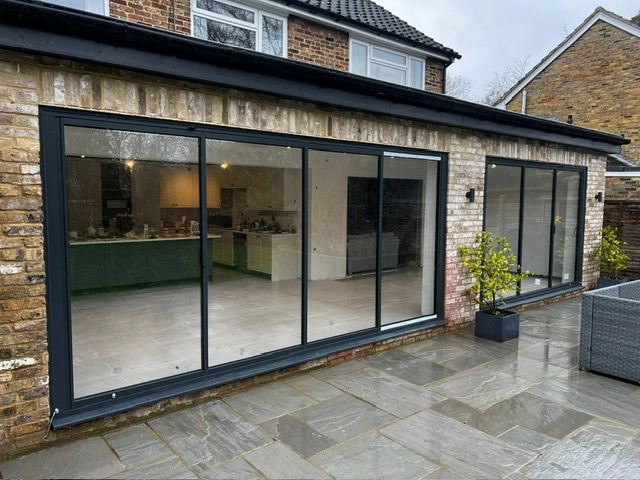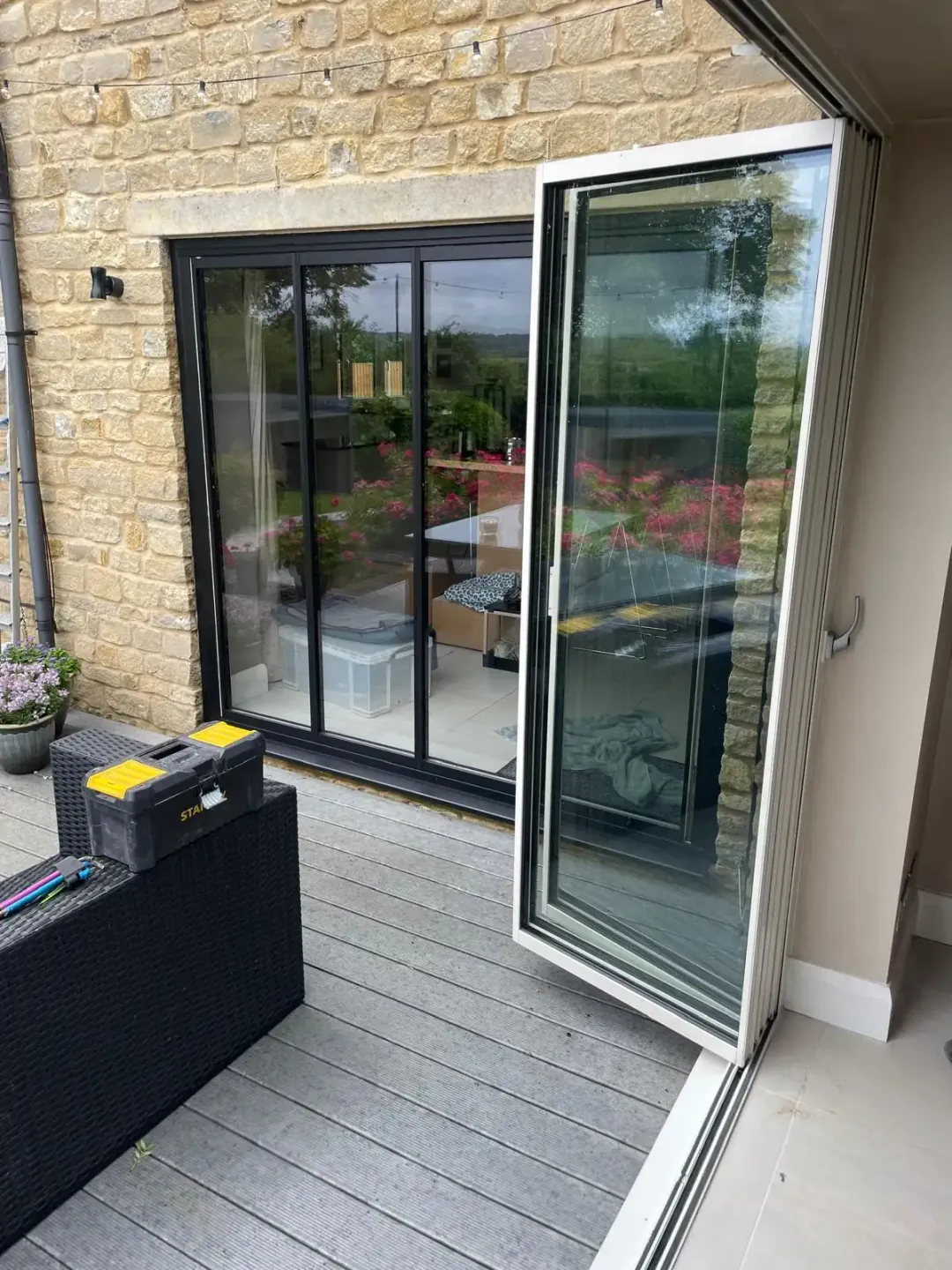Aluminium Glass Doors Guide: Making the Right Choice
Table of Contents

Types of Aluminium Glass Doors and Their Uses
Modern aluminium glass doors come in several distinct styles, each suited to different spaces and requirements in British homes.
Aluminium Bifold Doors for Wide Openings
Aluminium bifold doors, also known as aluminium concertina doors, operate on a top-hung track system that allows multiple glass panels to fold back against each other. The panels stack neatly to one or both sides when opened, making them ideal for apertures wider than four metres. Unlike their uPVC counterparts, aluminium frames support glass panels up to around 1.2 metres wide, reducing the number of frames needed and letting in more natural light.
Multi-panel configurations work particularly well in garden rooms where you might want to open up the entire wall during summer months. The slim profile of modern aluminium frames means less visible frame and more glass, while their structural strength prevents sagging or misalignment over years of regular use.
Modern Sliding Patio Door Systems
Aluminium patio doors feature large glass panels that glide along precision-engineered tracks. Modern systems can support triple-track designs where multiple panels overlap, allowing you to open up two-thirds of the aperture – far more than traditional sliding doors could manage. The robust nature of aluminium frames means they can hold substantially larger glass panels than other materials, creating wider views when closed and bigger openings when open.
Thanks to advances in roller technology, even very large panels move smoothly with minimal effort. Premium systems now include soft-close mechanisms similar to those found in luxury kitchen cabinets.

Slide and Stack Door Designs
Aluminium slide and fold doors (also known as slide and stack or slide and turn) blend the best aspects of sliding and bifold systems. Rather than folding in pairs like bifolds, each panel slides independently before pivoting at the end of its track. This design makes the panels easier to move than traditional bifolds since you’re only handling one at a time.
The ability to partially open these systems makes them particularly practical for British weather – you can slide open just one or two panels for ventilation without committing to moving the entire set. Their tracking system can often sit flush with the floor, eliminating the need for raised thresholds that might trip up young children or elderly users.
How Modern Aluminium Glass Doors Beat uPVC
Modern aluminium glass doors stand out from uPVC alternatives in several ways, with improved materials and manufacturing techniques addressing many limitations of older systems.
Frame Strength and Panel Size Limits
Structural rigidity sets aluminium frames apart from other materials. While uPVC frames need thick profiles to maintain stability, aluminium’s inherent strength allows for much slimmer frames – often less than half the width. This physical property lets manufacturers create larger glass panels without compromising stability, resulting in better views and more natural light.
The strength-to-weight ratio of aluminium makes it possible to support glass panels up to 3 metres tall in sliding door configurations. These dimensions simply aren’t achievable with uPVC, which starts to bow and warp under the weight of larger glass units. Modern powder coated aluminium doors resist corrosion through advanced finishing processes, maintaining their rigidity for decades without warping or sagging.

Thermal Performance Then and Now
Older aluminium glass doors earned a poor reputation for heat loss due to their basic thermal break designs. Current systems use advanced polyamide thermal breaks – plastic strips that separate the inner and outer frame sections. These barriers reduce heat transfer through the frame, rivalling or surpassing the insulation values of equivalent uPVC systems.
The slim profile of modern frames allows for wider glass units, which now feature improved thermal coatings and gas-filled cavities. Advanced manufacturing processes create precise connections between frame components, eliminating the cold spots common in earlier designs. Low-emissivity glass coatings reflect heat back into your home while allowing natural light through, working alongside the improved frame design to keep rooms warmer in winter and cooler in summer.
Colour Options and Finish Quality
Glass aluminium doors offer superior colour flexibility compared to uPVC alternatives. Rather than being limited to white or wood-effect finishes, aluminium accepts powder coating in any RAL colour. This coating bonds molecularly with the metal, creating a finish that won’t peel or fade even after years of sun exposure.
Different textures add another dimension to the finishing options. Metallic finishes catch the light in ways plastic never could, while matt coatings provide a contemporary look that hides fingerprints effectively. The coating process allows for dual-colour designs – you might choose darker external frames to match your windows while keeping the internal frames light to match your interior style.
Hardware Durability and Design
The structural strength of aluminium allows for larger, more robust door hardware. Handles mount securely into the metal frame rather than relying on plastic screw ports that can strip or wear out. Multi-point locking systems engage with solid aluminium keeps rather than plastic ones, providing better security and smoother operation.
Stainless steel rollers in sliding systems last longer when mounted in aluminium frames because the metal-to-metal contact points resist wear better than plastic alternatives. The frame’s rigidity helps maintain perfect alignment between rollers and tracks, preventing the sticking and jumping common in uPVC sliding doors as they age.
Choosing Aluminium Glass Door Frames
Aluminium glass doors vary widely in their frame designs, ranging from nearly invisible systems to more substantial profiles. Each style offers specific advantages for different architectural needs.
Frameless Systems
Modern frameless aluminium glass doors push the boundaries of minimal frame design. The glass panels appear to float in place, held only by subtle aluminium channels in the floor and ceiling. These systems use specially toughened glass up to 12mm thick, creating robust barriers despite their barely-there appearance.
Unlike conventional doors where the frame provides rigidity, frameless systems rely on the structural properties of the glass itself. The aluminium channels contain hidden rollers and locking mechanisms while remaining almost invisible. When closed, the glass-to-glass joints use minimal aluminium strips, creating an uninterrupted wall of glass that suits contemporary architecture particularly well.

Slim Frame Options
Slim frame patio doors strike a balance between frameless systems and traditional profiles. The visible frame width measures approximately 35mm – about half the thickness of standard frames. These narrower frames still provide excellent thermal performance thanks to modern thermal break technology.
The reduced frame size of modern aluminium glass doors allows for larger glass panels, improving views and increasing natural light levels. Recent advances in glass manufacturing mean these bigger panels maintain good energy efficiency despite their size. The slim frames contain multi-point locking systems within their profiles, ensuring security isn’t compromised by their reduced dimensions.
Manufacturers now offer slim frame systems with corner posts that open fully, removing all visible supports from the corner when the doors are pulled back. This design works especially well in garden rooms or pool houses where unobstructed views are desired. The slim frames maintain their rigidity even in these demanding corner configurations thanks to aluminium’s inherent strength.
Standard Frame Designs
Standard aluminium frames provide proven reliability with profiles around 70mm wide. Glass aluminium doors in this format often cost less than slimmer alternatives while offering excellent thermal performance. The wider frames house larger thermal breaks and can accommodate triple glazing without looking bulky.
The additional frame width creates space for sophisticated locking mechanisms and robust weather sealing. These systems excel in exposed locations where weather resistance takes priority over minimal aesthetics. The standard frame size allows for larger panel weights, supporting glass units up to 200kg in sliding configurations.
Modern manufacturing techniques mean even these wider frames look refined. Stepped frame designs hide the edges of double glazed units, creating clean lines from the outside. The frames accept the same high-quality powder coating as minimal systems, ensuring they maintain their appearance over decades of use.
Frame Finish Options
Frame finishes for aluminium glass doors now go beyond basic powder coating. Textured finishes resist fingerprints and minor scratches, while anodised options provide a metallic sheen that lasts for decades. Some manufacturers offer specialist coatings that repel water, reducing maintenance needs in exposed locations.
The powder coating process allows for precise colour matching between different door systems and windows. Metallic finishes catch light differently throughout the day, adding subtle variety to large glass walls. The coating technology lets homeowners choose different colours for interior and exterior surfaces without compromising durability.
Handle designs complement frame styles with matching finishes and proportions. Minimal frames pair well with streamlined handles that sit flush when not in use. Standard frames accommodate larger handle sets that provide extra leverage for moving heavier panels. Hardware finishes range from brushed stainless steel to powder-coated colours that match the frames exactly.
Aluminium Glass Doors in Different Settings
Aluminium glass doors adapt to various architectural styles and building types, each requiring specific configurations and features to work well.
Open Plan Extensions
Modern extensions often feature aluminium glass doors as their focal point. Corner configurations remove supporting posts entirely, opening up two walls at once. These installations typically use deeper foundations and specialised steel supports above the opening to carry the building load without visible columns.
Large sliding panels work particularly well in kitchen extensions, letting you push back the doors fully in good weather while maintaining excellent thermal performance when closed. The strength of aluminium frames allows for taller panels than other materials, matching the higher ceilings common in modern extensions.
Glass aluminium doors in extension projects often use advanced glazing options. Solar control glass helps prevent overheating in south-facing rooms, while acoustic glass reduces noise from busy gardens or nearby roads. The robust frame profiles accommodate these heavier specialist glass units without compromising smooth operation.
Garden Rooms and Pool Houses
Garden rooms demand excellent weather resistance from their aluminium glass doors. Many installations use triple track sliding systems, allowing you to open up two-thirds of the wall space. The remaining fixed panel provides shelter from sudden rain showers without blocking views.
Pool house installations face unique challenges from humidity and chemicals. High-grade powder coating resists these harsh conditions, while marine-grade hardware prevents corrosion. Specialist glass options reduce condensation build-up, working alongside built-in ventilation systems to maintain clear views.
British weather patterns make adaptable opening options essential in garden buildings. Sliding systems let you adjust the opening size easily, while bifold configurations provide shelter from different wind directions by partially opening selected panels. The precise tolerances of aluminium frames maintain smooth operation despite seasonal temperature changes.
Aluminium Glass Doors for Period Properties
Traditional homes benefit from aluminium glass doors that complement original features. Slimline frames mimic traditional steel windows while providing modern thermal performance. Textured powder coating creates subtle matt finishes that match old brickwork and stone.
Listed buildings often require special frame designs that satisfy conservation officers. Modern manufacturing allows for bespoke aluminium sections that replicate historical profiles while housing current weather sealing and security features. The ability to colour-match existing windows helps these new installations blend with period details.
We’d Love to Help You
Vision Glass Doors is a designer, manufacturer, and installer of premium door systems. We are a family run business with over 20 years’ experience and 5,000 installations across the UK.
Our leading range of door systems include Ultra Slim – Slide and Turn Doors, Slimline Sliding Patio Doors and Frameless Glass Doors. Suitable for various internal and external applications, they are applicable to residential and commercial projects.
Click Quick Quote Online for a free quotation within 24 hours. Alternatively, call or email us on 01582 492730 or at info@visionglassdoors.co.uk.

